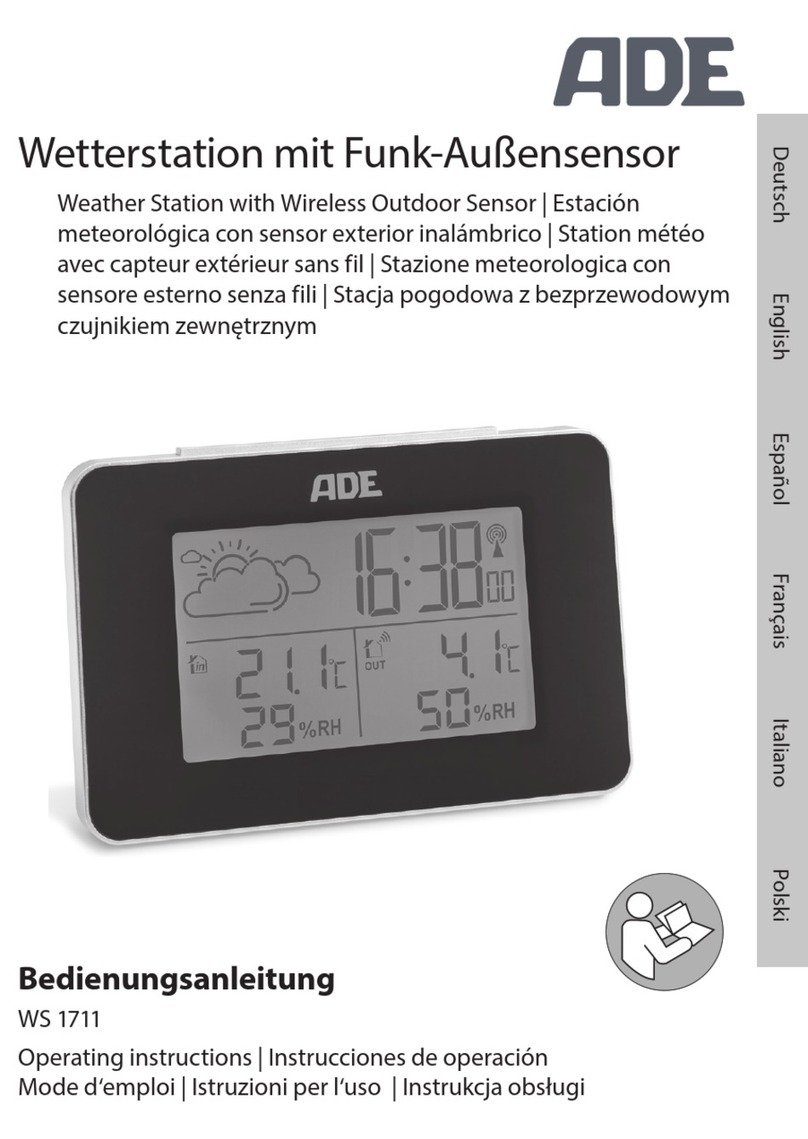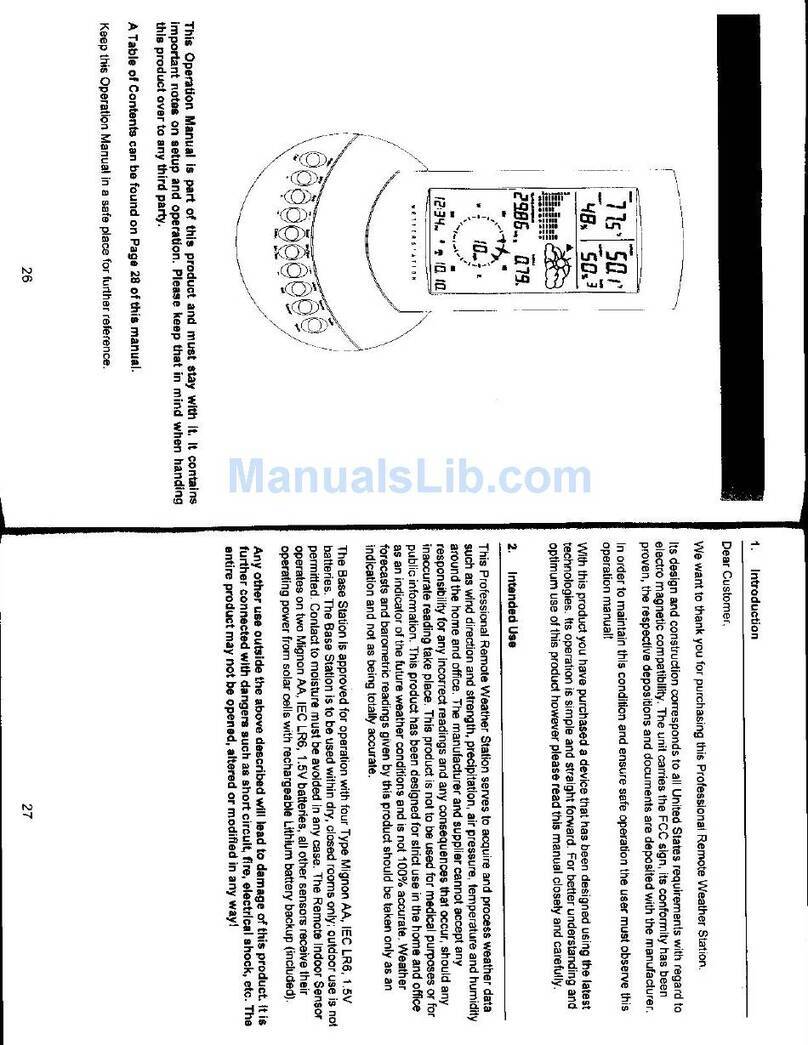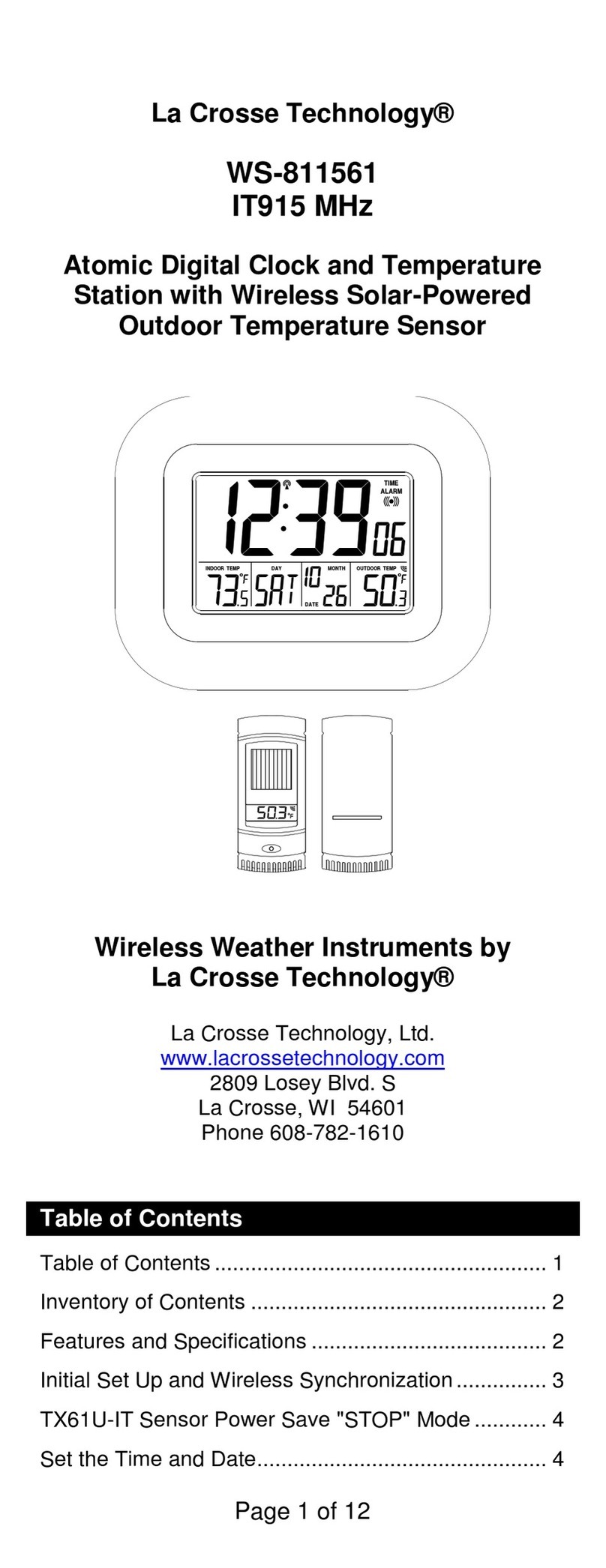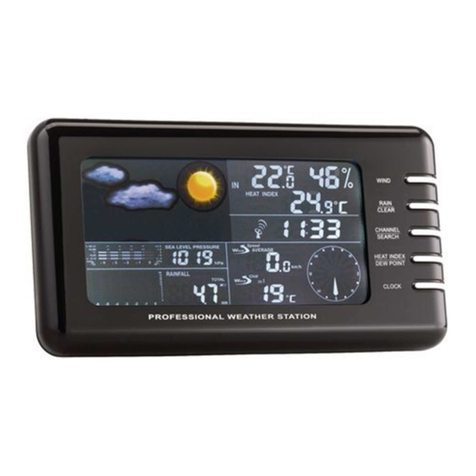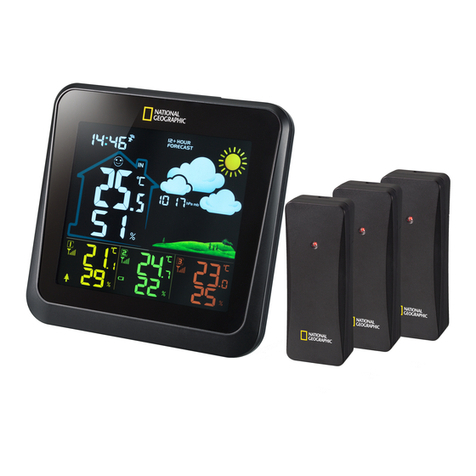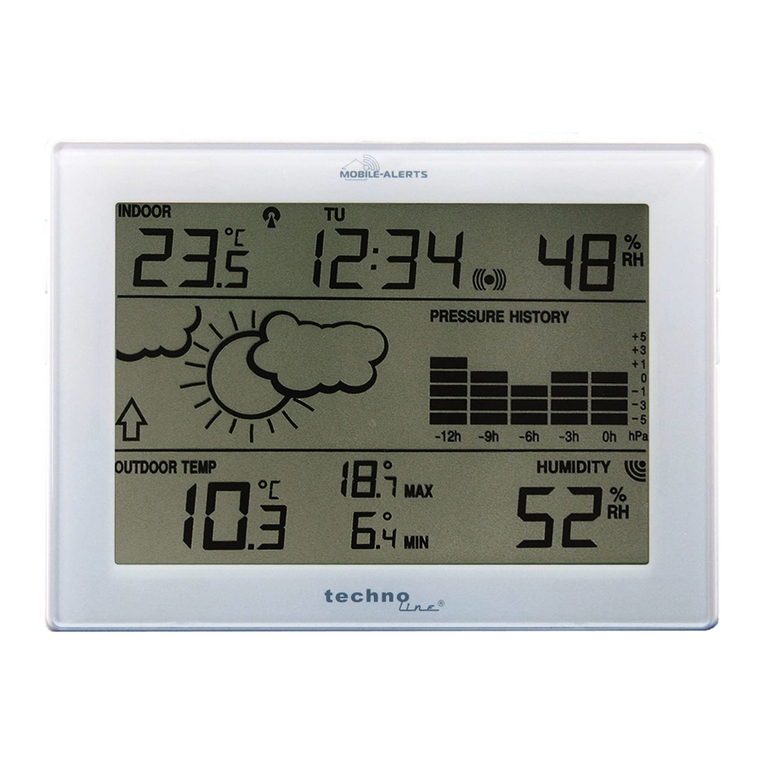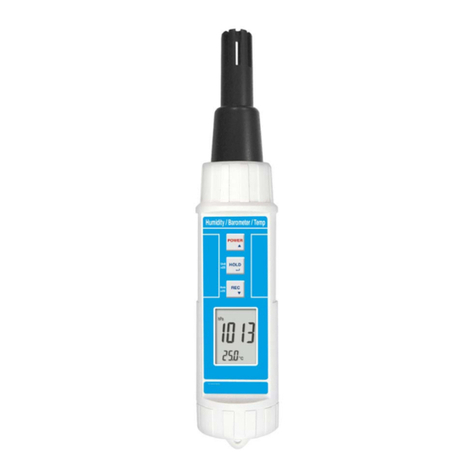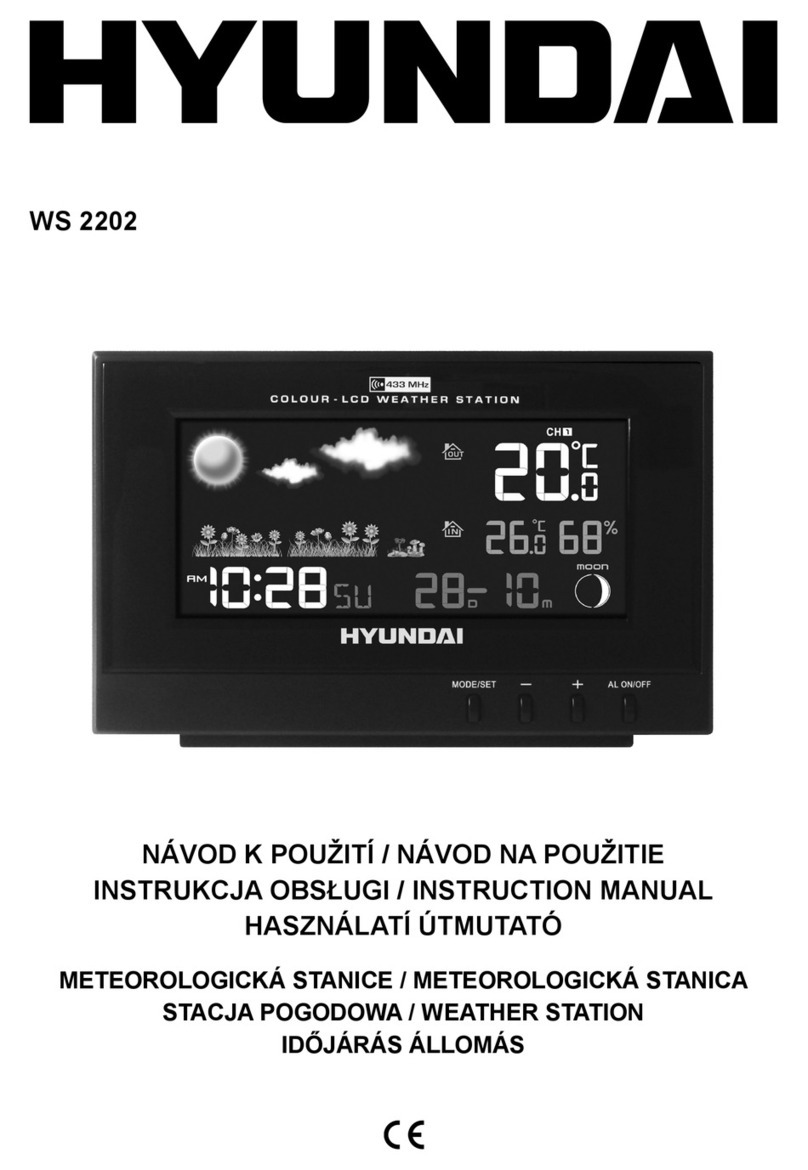changes in location, timing (airport weather stations are only updated
once per hour) and possible calibration errors (many ofcial weather
stations are not properly installed and calibrated).
Place the sensor in a shaded, controlled environment next to the uid
thermometer, and allow the sensor to stabilize for 24 hours. Compare
this temperature to the uid thermometer and adjust the console to
match the uid thermometer.
To calibrate indoor or outdoor temperature, in the Set Mode with indoor
or outdoor temperature ashing, press the + key or MIN/MAX key to
increase or decrease the temperature setting (in increments of 0.1ºC or
0.18ºF) to match the calibrated or known temperature source.
Setting Calibrated Humidity
The display console allows you to calibrate both the indoor and outdoor
humidity. Humidity is a difcult parameter to measure accurately and
drifts over time. The calibration feature allows you to zero out this error.
To calibrate humidity, you will need an accurate source, such as a sling
psychrometer or Humidipaks One Step Calibration kit.
To calibrate indoor humidity, in the Set Mode with indoor humidity ashing,
press the + key or MIN/MAX key to increase or decrease the humidity
setting (in increments of 1%) to match the calibrated or known humidity
source. To return the indoor humidity to the measured value, press and
hold the SET key for 3 seconds and the humidity will return to the
uncalibrated value.
To calibrate outdoor humidity, in the Set Mode with outdoor humidity
ashing, press the + key or MIN/MAX key to increase or decrease the
humidity setting (in increments of 1%) to match the calibrated or known
humidity source. To return the outdoor humidity to the measured value,
press and hold the SET key for 3 seconds and the humidity will return to
the uncalibrated value.
Note: The remote (outdoor) thermo-hygrometer will always display the
measured humidity level and not the calibrated humidity level. Only the
console will show the calibrated value.
Note: The dew point calculation is based on the calibrated humidity level.
Setting Barometric Pressure
The display console displays two different pressures: absolute (measured)
and relative (corrected to sea-level).
To compare pressure conditions from one location to another,
meteorologists correct pressure to sea-level conditions. Because the air
pressure decreases as you rise in altitude, the sea-level corrected
pressure (the pressure your location would be at if located at sea-level) is
generally higher than your measured pressure.
